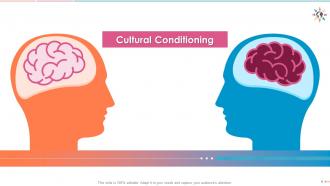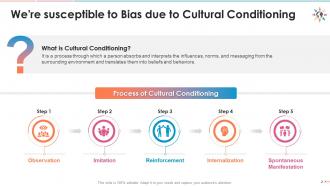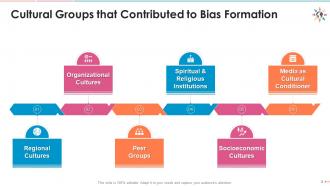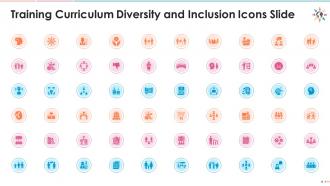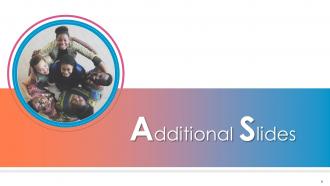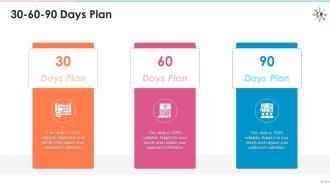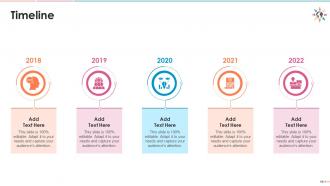Diversity and inclusion training on cultural reasons behind bias formation edu ppt
This deck of slides illustrates the impact of cultural conditioning on bias formation. It contains information about the cultural conditioning process with major steps such as observation, imitation, reinforcement, internalization, and spontaneous manifestation. Also, it covers the details of multiple cultural groups that contribute to bias formation, such as regions, organizations, peers, media, spiritual and religious institutions, leading to poor diversity and inclusion.
- Google Slides is a new FREE Presentation software from Google.
- All our content is 100% compatible with Google Slides.
- Just download our designs, and upload them to Google Slides and they will work automatically.
- Amaze your audience with SlideTeam and Google Slides.
-
Want Changes to This PPT Slide? Check out our Presentation Design Services
- WideScreen Aspect ratio is becoming a very popular format. When you download this product, the downloaded ZIP will contain this product in both standard and widescreen format.
-

- Some older products that we have may only be in standard format, but they can easily be converted to widescreen.
- To do this, please open the SlideTeam product in Powerpoint, and go to
- Design ( On the top bar) -> Page Setup -> and select "On-screen Show (16:9)” in the drop down for "Slides Sized for".
- The slide or theme will change to widescreen, and all graphics will adjust automatically. You can similarly convert our content to any other desired screen aspect ratio.
Compatible With Google Slides

Get This In WideScreen
You must be logged in to download this presentation.
PowerPoint presentation slides
Presenting Diversity and Inclusion Training on Cultural Reasons Behind Bias Formation. This presentation deck contains well researched and uniquely designed slides. These slides are 100 percent made in PowerPoint and are compatible with all screen types and monitors. They also support Google Slides. Premium Customer Support available. Suitable for use by managers, employees and organizations. These slides are easily customizable. You can edit the colour, text, icon and font size to suit your requirements.
People who downloaded this PowerPoint presentation also viewed the following :
Content of this Powerpoint Presentation
Slide 2
This slide provides information regarding the definition of cultural conditioning. It also includes details of the cultural conditioning process in terms of multiple steps such as observation, imitation, reinforcement, internalization, and spontaneous manifestation.
Instructor’s Notes:
The cultural conditioning has the following steps:
- Step 1 Observation: In this stage, an individual is merely observant of the wrongful behaviors of elders around them
- For example: An elder is making derogatory comments about a particular race in front of a teenager
- Step 2 Imitation: In this stage, an individual consciously carries out the same actions as observed earlier around him
- For example: The same teenager starts making derogatory comments on a classmate of a different race
- Step 3 Reinforcement: Now, this conscious bias behavior is further validated and encouraged by family members, friends, and colleagues
- For example: Teenager posts derogatory racist statement online, and his/her friends like and share it
- Step 4 Internalization: Over a period of time, conscious bias behavior becomes rigid due to the influence of media, propaganda of leaders, etc.
- Step 5 Spontaneous Manifestation: Eventually, it leads to the formation of unconscious bias in the individuals
Slide 3
The purpose of this slide is to provide information regarding the cultural groups which influence the beliefs and behaviors of an individual, such as regional cultures, organizational cultures, peer groups, spiritual and religious institutions, socioeconomic cultures, and media.
Instructor’s Notes:
The major cultural groups that influence an individual's beliefs and behaviors:
- Regional Cultures: Norms and values of neighborhoods, cities, states, and countries one is living in affects the person’s biases
- For example: People living in North America are skeptical about trusting individuals from Muslim countries
- Organizational Cultures: Authoritative figures in family, educational institutes, and workplaces perceive how an individual perceives the world
- For example: If one's immediate boss is homophobic, one might unconsciously start judging homosexual people
- Peer Groups: Friends, colleagues, and people with similar hobbies also influence one's biases
- Spiritual and Religious Institutions: Spiritual and religious leaders influence one's moral and ethical systems, eventually leading to a bias against other religions
- Socioeconomic Cultures: A person's economic class also contributes towards bias formation
- For example: An individual brought up in a high-class society might see others from the lower social class as less capable
- Media as Cultural Conditioner: Media as a cultural conditioner also play a significant role in formulating biases
- For example: Channels showing anti-immigrant news create a perception that immigrants are bad for the country. Thus, making their audience also anti-immigrant
Additional Slide 1
This slide contains icons related to Diversity and Inclusion in the same color theme that can be used by you to provide additional information of your own.
Additional Slide 2
This slide can be edited by anyone to provide information about your organization. The slide is using the same color theme and similar design elements as the main deck.
Additional Slide 3
This slide contains editable 30-60-90-day plan and is completely editable to suit presenter’s needs.
Additional Slide 4
This slide contains a roadmap template which you can edit to communicate your roadmap in an impactful way.
Additional Slide 5
This fully editable slide contains Activity Calendar for Diversity & Inclusion activities that you can plan for your teams.
Additional Slide 6
This fully editable slide contains timelines for your plan around implementing Diversity & Inclusion agenda in your organization.
Diversity and inclusion training on cultural reasons behind bias formation edu ppt with all 10 slides:
Use our Diversity And Inclusion Training on Cultural Reasons Behind Bias Formation Edu Ppt to effectively help you save your valuable time. They are readymade to fit into any presentation structure.
-
It saves your time and decrease your efforts in half.
-
Illustrative design with editable content. Exceptional value for money. Highly pleased with the product.
-
Visually stunning presentation, love the content.
-
Innovative and Colorful designs.
-
Excellent template with unique design.












